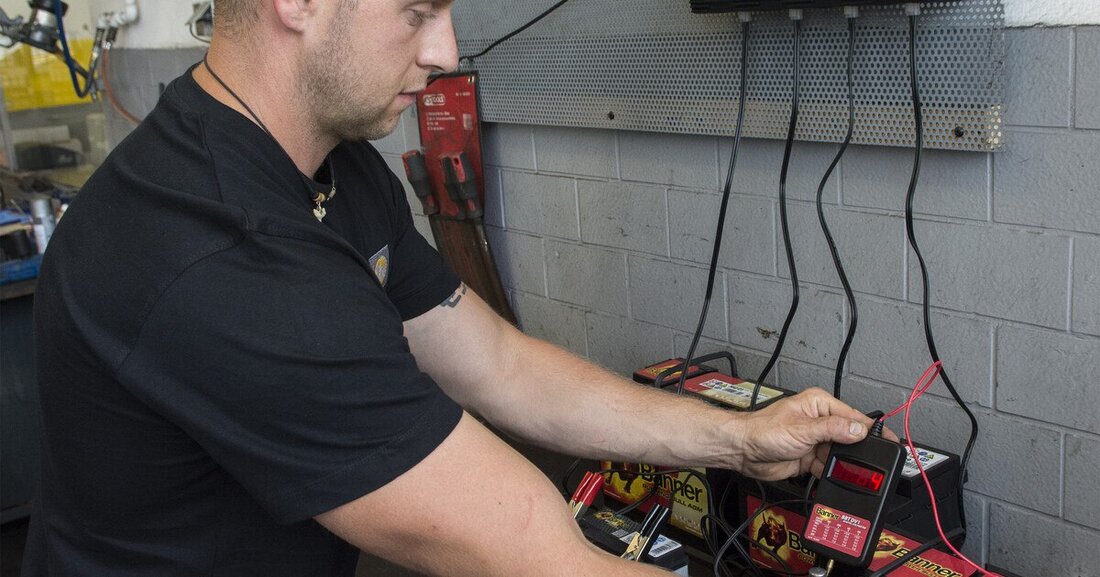Heat or Cold - Which is Worse for Car Batteries?
The starter battery in a car ensures reliable starting in winter and summer. But what is harder on a car battery: hot summer days or freezing cold?

Heat or Cold - Which is Worse for Car Batteries?
In the first few days of winter you see the most breakdown service vehicles. The reason: Many cars don't start because the batteries are discharged. Does this mean that it is the low temperatures that quickly discharge the starter batteries in the car? No. In fact, summer heat is much worse for the battery and its performance than winter.
self-discharge
The reason is simple: extreme temperatures are particularly harmful to car batteries because at high temperatures, the electrochemical reactions inside the battery occur faster and the phenomenon of self-discharge is accelerated. As a result, the charge level (capacity) of the battery decreases continuously. And faster than at lower temperatures. The battery can suffer long-term damage. For this reason, when developing a vehicle, the position of the starter battery is chosen based on where it is best protected from heat or extreme temperatures. A car battery next to an exhaust manifold would make no sense and would severely affect the lifespan of the battery. As a rule of thumb: for every 10 degrees Celsius increase in temperature, the self-discharge rate doubles. That's why experts recommend: If a battery is exposed to a temperature of more than 20 degrees Celsius, it should be recharged regularly. In the worst case, there is a risk of so-called grid corrosion. The conductive material in the battery decreases, the internal resistance increases, and the starting power decreases. Until the battery can no longer start the car. Once the battery capacity has been completely discharged by heat or extremely high temperatures, it can no longer be completely restored. The car battery is then permanently damaged and the damage is irreparable.
Prevention of empty starter batteries
In winter, cars need more energy from the batteries to start. Since these have continuously reduced their capacity over the summer - and the hot days - the breakdown service has to be called out. The starter battery no longer has enough energy to start the vehicle. To counteract this, there are a few useful tips from the professionals:
- Autos im Sommer oder an heißen Tagen nicht unmittelbar in der prallen Sonne parken. Das schont nicht nur den Lack und Kunststoffteile, sondern vor allem die Starterbatterie.
- Regelmäßiges Fahren des Autos sorgt dafür, dass die Batterie wieder aufgeladen wird. Aber bitte keine Kurzstrecken (Stadtverkehr). Um den Stromverbrauch beim Starten wieder in die Batterie laden zu können, sollten mindestens 10-12 Kilometer zurückgelegt werden.
- Bei Autos mit Start-Stopp-Automatik kann es hilfreich sein, die Funktion – sofern möglich – auf den ersten 10-12 Kilometer bzw. bei Kurzstreckenfahrten zu deaktivieren, damit die Batterie durchgängig geladen werden kann.
- Bei Servicearbeiten am Fahrzeug sollte das Auto immer an einer externen Stromversorgung hängen, um die Ladekapazitäten zu schonen bzw. die Batterie während der Arbeiten sogar zu laden.
- Bei Zweitfahrzeugen oder im Saisonbetrieb sollte die Starterbatterie mit entsprechenden Batterie-Ladegeräten alle zwei Monate geladen werden. Auch eine Tiefentladung durch zu lange Standzeiten kann die Batterie nachhaltig schädigen. Expertentipp: Bei längerer Nichtbenutzung des Fahrzeugs (z.B. Cabrios im Winter) die Batterie abklemmen oder mit einem speziellen Schalter das Fahrzeug stromlos schalten.
- Batterie sauber halten und bei Bleibatterien mit Zellzugang den Elekrolytstand in jeder Zelle kontrollieren. Ist der Elektrolytstand zu gering (Verdunstung), einfach mit destilliertem Wasser wieder auffüllen.
- Sollte die Spannung der Batterie sehr rasch fallen – obwohl der Akku erst kürzlich geladen wurde – kann entweder die Autobatterie bereits defekt sein oder im Fahrzeug fließt Strom. Dann empfiehlt sich ein rascher Besuch beim Profi, der Kriechstrom oder eine defekte Starterbatterie mit den passenden Geräten schnell ausmachen kann.
It's all about the tension
Car batteries should have a voltage of 12.7 volts or more when the ignition is off and the vehicle is not in use. If the voltage is below 12.5 volts, the battery has already begun to discharge itself. Trickle charging is strongly recommended - ideally with a battery charger. Or just drive a longer route again. The voltage can be easily measured with a voltmeter or with a professional battery test tool.

 Suche
Suche
 Mein Konto
Mein Konto